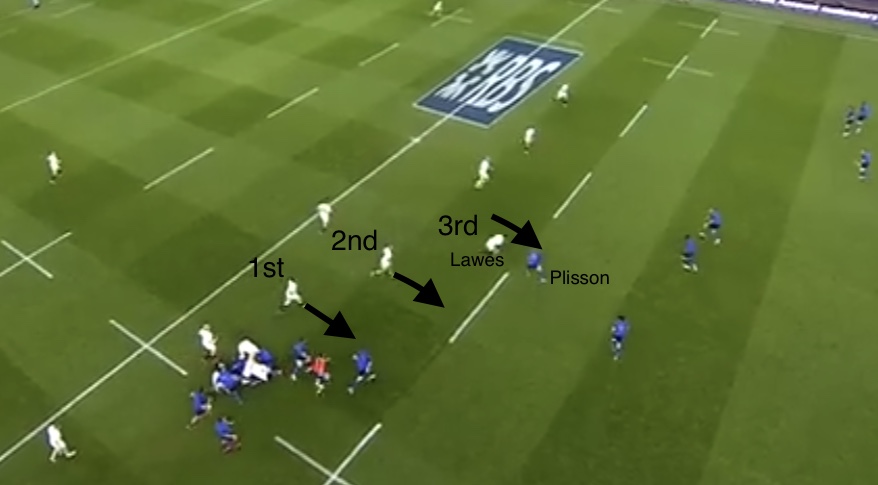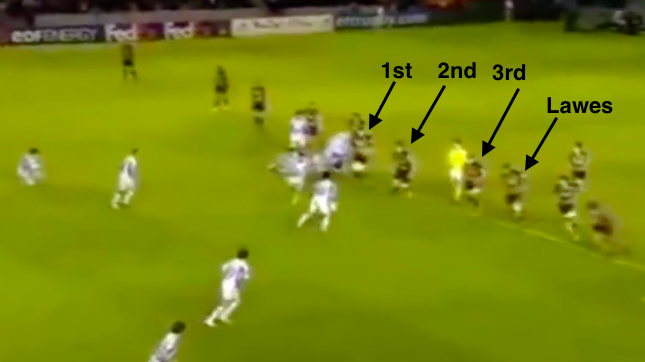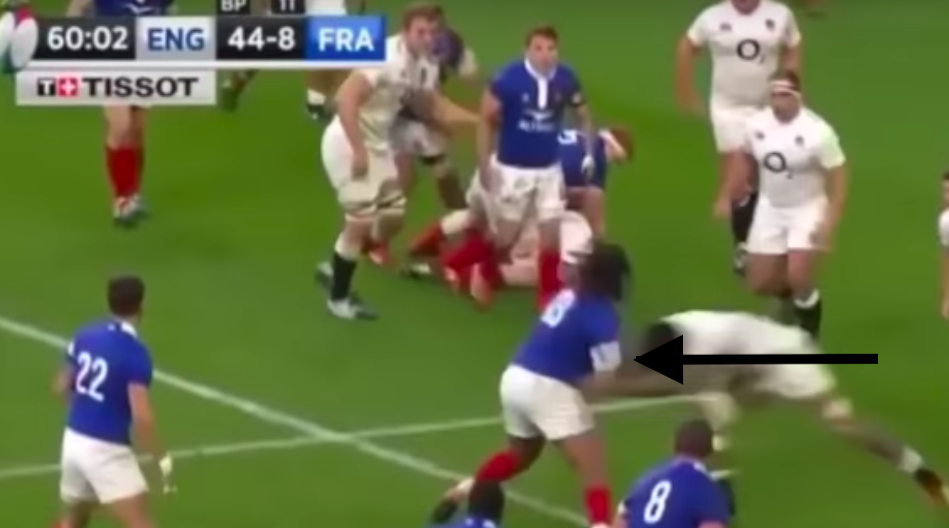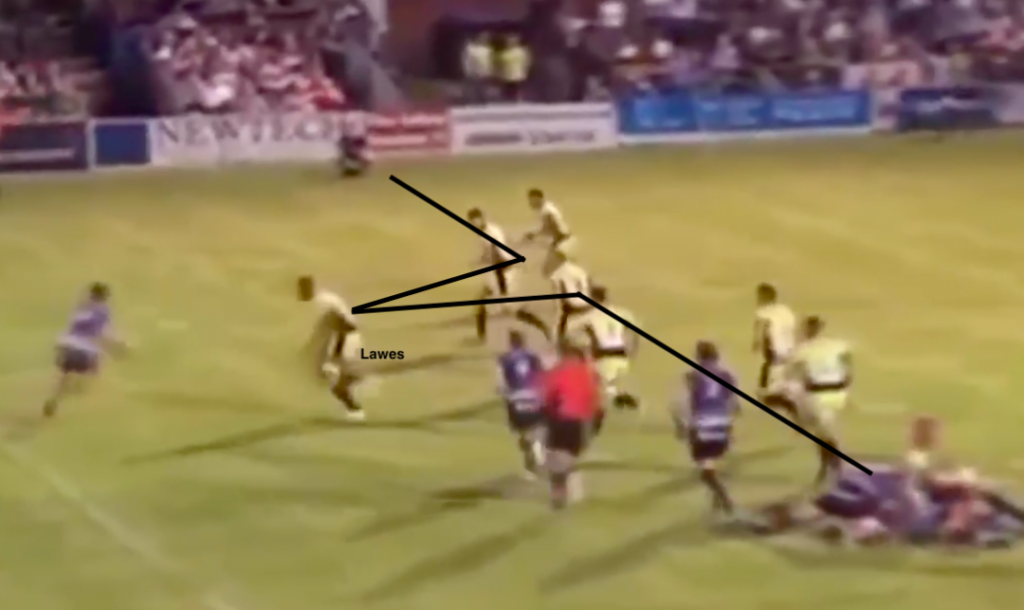Lawes enforcement: Why his tackle technique reigns supreme
Tackling is hugely technical. It has become such a controversial and consequential part of rugby union that a game can turn on a single hit. The eyes of rugby’s judiciary have been focused on the tackle area recently to prevent unnecessary injury. Rightly so. At the avant-garde of the tackling discipline is a 6′ 7″ steely-eyed dealer of justice, Courtney Lawes. We break down why his tackle technique reigns supreme.
Today, there are at least four major types of tackle: chop, choke, man-and-ball and the traditional pelvis tackle – all of which have variations; and, all of which can have between one and three tacklers involved.
Players will naturally have a preferred method. The likes of Dan Lydiate and Joe Worsley both tackle around the ankles: highly effective but allows for offloads. Owen Farrell and Jonny Sexton both like to hit higher in a man-and-ball style: very good for dislodging the ball, staying on your feet and preventing offloads. But it always runs the risk of ‘riding up’ and being penalised. Brad Barrett does them all but mostly tackles the pelvis.
The reason Courtney Lawes is so interesting is he has crafted his own style. It’s a hybrid of a pelvis and a man-and-ball. I call it the ‘elbow tackle’. Below I break down the components that make Lawes the purveyor of destructive tackling – without giving away penalties. In the aftermath of Will Spencer’s red card at the beginning of the season, a number of pundits jumped to the defence of tall men, citing their natural height disadvantage. This is pure nonsense. And Lawes proves it.
The elbow tackle
When Lawes exacts rugby retribution on his target, his point of contact is the elbow. Why? It is as high as he dare hit in order to not ride up and catch the neck area (therefore a high tackle and probably a card). It is also above the halfway point of the player’s body. This is what creates an imbalance and a whiplash effect.
Elbow hit on Charlie Hodgson
Because the contact is a little higher than a pelvis tackle and collides with the arm, the probability of a dislodge or knock-on increases. If you watch a Lawes highlight reel, you will notice that his destructive tackles all fall around the elbow area.
Elbow hit on Toby Flood
Positioning
When Lawes makes his most fearsome hits he usually stations himself at the third defender out from the ruck. Lined up on the inside or outside shoulder of the 10 so he can accelerate towards the fly half from an angle. When coming from out-to-in, he is in the 10’s blind spot because they are looking at the 9.

When he goes in-to-out, his hit is usually as the 10 turns his head to pass the ball. Either way, they don’t see the Chief Justice coming.

Height and athleticism
Lawes is all of 6’7”. He also has the athleticism and fitness to play back row. Combined with good flexibility, it means that he gets low before tackling (lower than any other second row). Because of this, he is able to generate more power when he explodes and extends his limbs.
If you want to move Bastareaud, you need to generate huge force – which Lawes does because none of his power is wasted going up. It all travels forward.

To add, when other players hit man-and-ball, their torsos are mostly upright or leaning forward slightly. Lawes’ torso is virtually horizontal to the floor on his destructive tackles. This demonstrates a pathological commitment to the tackle –there is no bail-out option.
The gamble
The most impressive thing about Lawes’ tackling game is not physical at all. It’s his judgement. What goes unnoticed and unremarked on is the amount of big tackle opportunities he doesn’t take. It is not dissimilar to a batter in baseball, only swinging when the ball is in exactly the right place. As described by Warren Buffet here. Lawes only goes for the bone-crumbler when the situation is just right. The rest of the time he stays in the defensive line and makes his regulation tackles.

When he does decide to go, however, he goes all-in. His speed out of the line, creates a dog leg in the defensive line. But because his timing is so good, he rarely gets caught out with an inside ball back off 10.
The gamble on Plisson
Conclusion
As we saw with his tackles on Plisson and Bastareaud, big hits can alter the momentum and atmosphere of games. Lawes is one of the tallest in the game and he hardly ever gets carded for high shots, seatbelts or riding-up. This is not coincidence. Lawes serves up cold, lethal, Exocet missile elbow tackles with chilling accuracy. On the eve of his 50th start, let’s hope Cardiff witnesses why his technique reigns supreme.